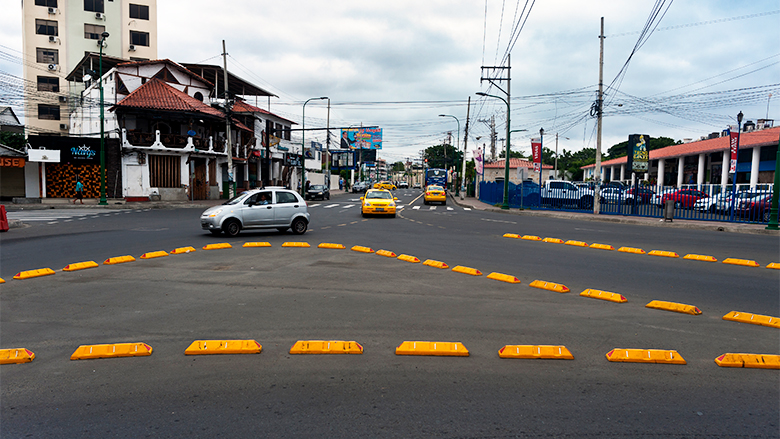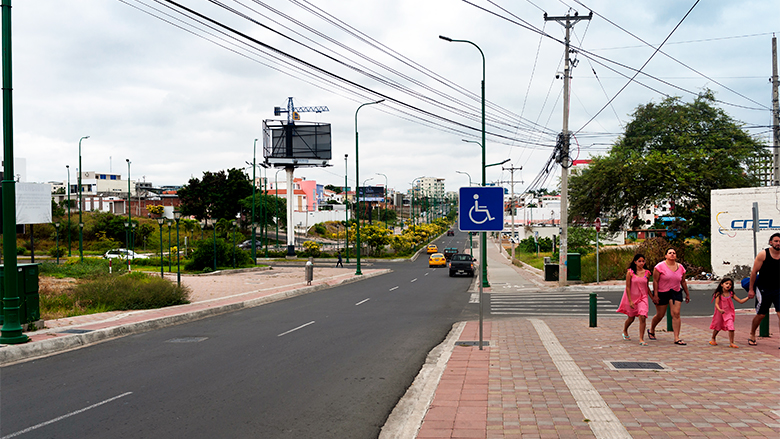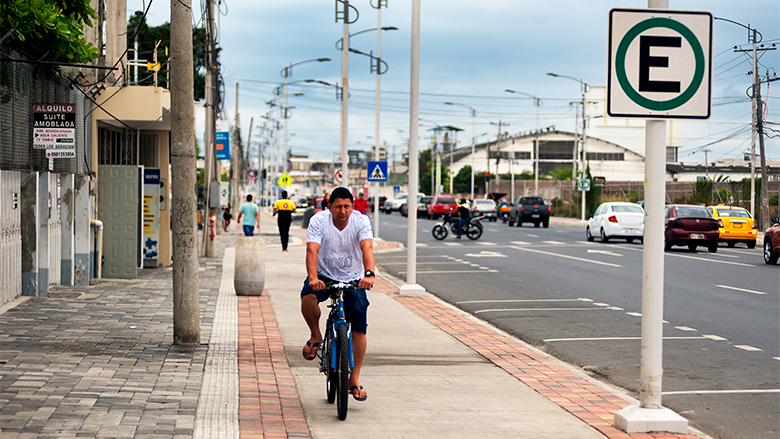Challenge
In 2013, the city of Manta struggled to provide high-quality (WSS) services and to maintain its roads network in decent condition. Water supply and sanitation services coverage levels stood at 79 % and 64 %, respectively. Existing pipes were about 50 years old and ill-performing, and the existing wastewater treatment plants faced operational issues. At an institutional level, Manta’s WSS utility (known as EPAM from its name in Spanish) faced numerous challenges, including an out-of-date cadaster, double the number of employees per connection recommended by international best practice, no clear policies governing service suspension, and a lack of reliable micro- and macro-meters.
In regard to transport, only 50 % of Manta's roads were considered to be in good or fair condition. Significant areas required rehabilitation, including unpaved areas in lower-income neighborhoods. Accessibility issues, such as sidewalks without ramps, hampered mobility for residents with disabilities. In addition, Manta lacked a fact-based system to proactively guide and coordinate transport investments.
Approach
The Ecuador Manta Public Services Improvement Project represented the Bank’s first direct engagement with the municipality of Manta through a subnational investment project financing loan. Furthermore, this was one of the first projects with which the World Bank returned to work with Ecuador after several years. The project included areas where Manta had critical need of investment, but implementation capacity both at a project management and the institutional level presented shortcomings. To mitigate this challenge and build investment sustainability, the project focused on providing close supervisory support and on accompanying transport and WSS infrastructure investments with institutional strengthening activities. Strategies to strengthen institutional capacity included helping to structure a partnership between a private company and EPAM to improve operational and commercial efficiency as well as developing an easy-to-use road management data system. On the infrastructure front, the project coordinated WSS and transport construction activities to minimize inconvenience to residents and maximize efficiency. The government of Manta leveraged the project’s multisectoral coordination approach to support Manta’s emergency response in 2016 to a 7.8 Richter magnitude earthquake.

Results
The project reached nearly all of its anticipated results despite encountering numerous external obstacles, including political turnover, a 7.8 Richter magnitude earthquake, a national fiscal crisis, and the COVID-19 pandemic. Over the course of implementation (2013 to 2021), the project achieved the following WSS results:
- Nonrevenue water levels dropped from 50 % to 30 %.
- Water continuity increased from 14 hours to 14.7 hours of service per day, with further improvements expected once pending works are complete.
- Access to piped water and new household sewer connections reached 6,707 additional households.
- Rehabilitation of sewerage connections benefited 15,740 households.
- EPAM’s financial situation improved as shown by the decrease in working ratio from 88 % to 79.63 %.
The project achieved these results primarily through:
- Rehabilitation and replacement of 138 kilometers (km) of water pipes and 232 km of sewerage pipes.
- Macro-meters were installed across the network.
- A strategic alliance with a private operator resulted in updates to EPAM’s client database and increased billing collection from 68 % to 91 %, among other gains.
On the transportation front, the project achieved the following results:
- Walkability improved through installation of 18 sidewalks and 17 streetlights and planting of 5,400 trees.
- Travel time along Par Vial, the main entrance to the city, went from 15 to 13 minutes.
- Paved roads reached 23,024 additional residents’ homes.
- A new road data management system now uses traffic data to evaluate remotely the condition of the entire city’s streets.
- An urban mobility plan was developed.
The project achieved these results by using the following resources:
- Financing enabled upgrades to 16 km of poor-quality streets and paving for 20 km of previously unpaved streets.
- Technical assistance and studies supported the development of transport tools and guided infrastructure investments to maximize urban mobility and other aspects of urban transport.


